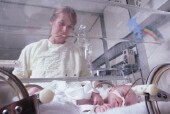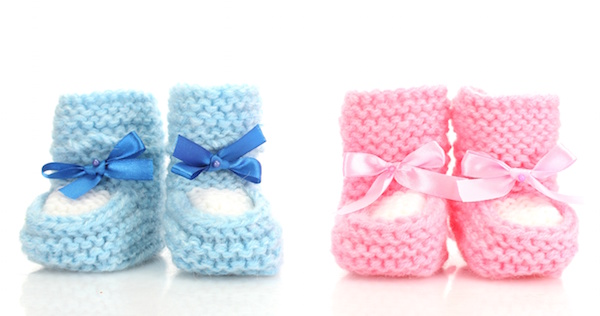
THURSDAY, April 25 (HealthDay News) — Babies born with serious congenital heart defects are more likely to survive now than they were in the late 1970s, a new study finds. There is still plenty of room for improvement, however, the researchers added.
Over a 26-year period, they tracked the percentage of children born with the most serious heart defects who survived the one-year mark.
“For infants with a critical congenital heart defect, survival up to one year has improved over time,” said researcher Dr. Matthew Oster, medical officer at the U.S. Centers for Disease Control and Prevention.
“It has improved from 67 percent at one year for infants born from 1979 to 1993 to 83 percent for those born from 1994 to 2005,” he said.
One of every 110 births in the United States involves a congenital heart defect, the researchers said. Some are known as non-critical, not needing immediate attention. The more serious defects are known as critical congenital heart defects (CCHDs). For this study, Oster’s team focused only on these most serious defects.
About one of four heart defects are CCHDs. One example is a condition known as hypoplastic left heart syndrome, in which the left side of the heart, including the left ventricle, doesn’t develop properly.
During the period studied, more than 1 million babies were born, including 7,000 with a congenital heart defect. Of those, nearly one-fourth had a CCHD. The data was obtained from the Metropolitan Atlanta Congenital Defects Program.
The study was published online April 22 and in the May print issue of the journal Pediatrics.
Children diagnosed with CCHDs at one day old or earlier had a lower survival rate (72 percent) than those diagnosed after one day of age (83 percent), Oster found. The researchers suspect that is because they had a more severe defect that was recognized more quickly. The earlier children were born during the 26-year time period, the lower the survival rate. Those whose mothers were under the age of 30 also were less likely to survive the one-year mark.
The study is an important one, said Dr. Edward McCabe, medical director of the March of Dimes.
Although the study showed that “things are getting better,” McCabe said, more improvement is needed. Nearly one in five do not live until their first birthday. “That’s a concerning public health issue,” he said.
The study also has another purpose, besides documenting whether survival has improved. It will provide a kind of baseline for researchers to look at as they assess the effectiveness of a screening test, called pulse oximetry, that is being used increasingly to diagnose these defects.
In 2011, screening for CCHDs was added to the recommended list of newborn health conditions to check for by the U.S. Secretary of Health and Human Services.
Pulse oximetry, already available and used for other patients, is noninvasive and done at the bedside. The test costs about $10.
A probe placed on the baby’s foot detects the percent of hemoglobin saturated with oxygen. Babies with CCHDs usually have a low percent of saturation even before symptoms appear.
The latest findings will provide important information so researchers can evaluate how much of a difference the pulse oximetry screening will make in earlier diagnosis and improved survival going forward, McCabe said.
Meanwhile, expectant parents, especially those with a family history of heart defects, should ask their health care provider if they are planning to do pulse oximetry testing, McCabe said. Many times, he said, the defects can even be detected before birth.
More information
To learn more about congenital heart defects, visit the March of Dimes.

